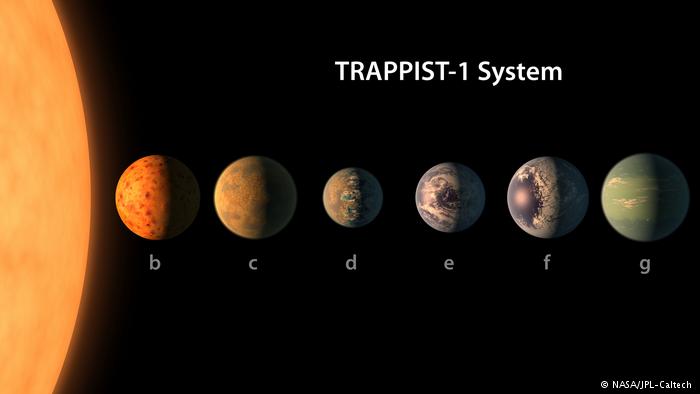NASA Finds Seven New Exoplanets
On Wednesday, February 22nd, 2017, astronomers from the National Aeronautics and Space Administration (NASA) announced their discovery of seven Earth-sized exoplanets orbiting a dwarf star 39 light years from Earth.
An “exoplanet” is defined as any planet orbiting a star outside of our own solar system. Although discovering exoplanets is not exactly rare—there are approximately 3,583 exoplanets known today—these seven new additions mark a huge leap forward in astronomy because of their unique characteristics.
Finding Earth-sized, rocky planets such as those discovered is rare enough as it is, but seven all in the same solar system is unprecedented. Not only are the planets all roughly Earth-sized; three out of the seven also reside in what is called the “habitable zone” of their star. The habitable zone of a star is the range of orbits within which a planet can most likely support liquid water. The only way life has been proven to form is with liquid water, so these findings are especially exciting for those who look to the stars for opportunities of alien life or future colonization.
“This discovery could be a significant piece in the puzzle of finding habitable environments, places that are conducive to life,” said associate administrator of NASA Thomas Zurbuchen. “Answering the question ‘are we alone’ is a top science priority and finding so many planets like these for the first time in the habitable zone is a remarkable step forward toward that goal.”
Another reason so many in the astronomy community are intrigued by these seven exoplanets is the fact that they are orbiting a star classified as an ultra-cool dwarf, meaning its temperature is below 2,700 K (4,400° F). The star in the newly discovered system, named TRAPPIST-1 after the telescope that discovered it, reaches an average temperature of about 2,550 K (4,130° F); although it sounds hot, this temperature is quite cool compared to our Sun’s 5,778 K (9,941° F).
In previous discoveries, ultra-cool dwarfs such as TRAPPIST-1 have not been found to have Earth-size planets in their orbits.
Michael Gillon, lead investigator of the TRAPPIST project said, “The seven wonders of TRAPPIST-1 are the first Earth-size planets that have been found orbiting this kind of star. It is also the best target yet for studying the atmospheres of potentially habitable, Earth-size worlds.”
As of right now, the planets orbiting TRAPPIST-1 are unreachable at 39 light years away, but the system is relatively close to Earth compared to other astronomical objects. For reference, the closest star to our solar system is four light years away, whereas the farthest visible star from Earth is about 55 million light years away, meaning that TRAPPIST-1 is definitely within our cosmic neighborhood. In the future, space programs internationally plan to further investigation on the TRAPPIST-1 system, hopefully finding the potential for life on any of the seven planets.







